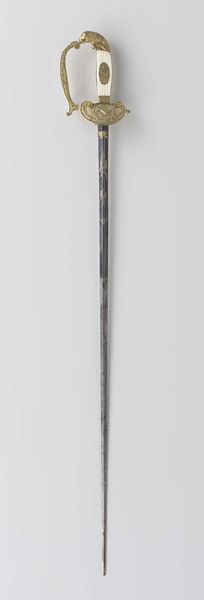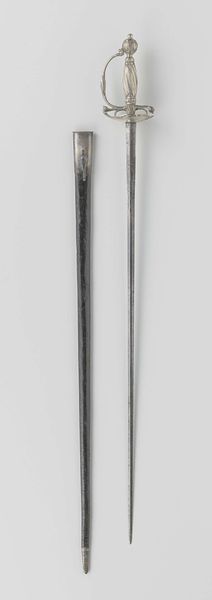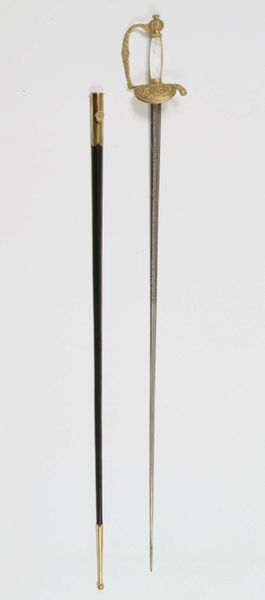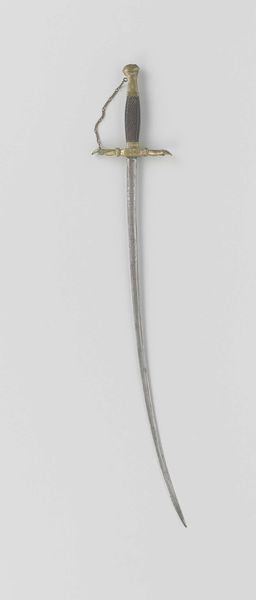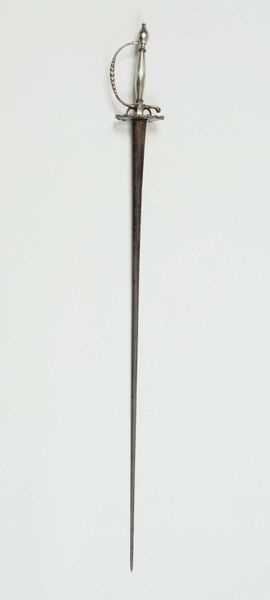
carving, metal, sculpture
#
carving
#
baroque
#
metal
#
form
#
sculpture
#
united-states
#
line
#
history-painting
Dimensions: L. 31 1/4 in. (79.4 cm)
Copyright: Public Domain
Curator: What strikes me first about this dress sword, dating roughly from 1700 to 1800, is its unsettling elegance. The silver surface is smooth, the design minimal almost. Editor: I find its restraint equally compelling. A lot of power structures during that period flaunted opulence as a form of control. This sword whispers rather than shouts. What can we deduce about its maker or its intended wearer? Curator: Right. Examining its material composition, we're mainly looking at steel and likely silver for the hilt. The steel suggests a capacity for functional purpose—however dulled it may now be. And I would suggest a skilled metalsmith would've been required to shape this. Editor: Which immediately suggests the patronage of someone with means. Thinking of the societal context, who were the key figures commissioning and wielding such objects at the turn of the 18th century? Landowners? Politicians? Even merchants attempting to elevate their status? Curator: Most definitely. A piece such as this moves past functionality. How would an artisan work, layer after layer, crafting what might feel almost like jewelry today? A question of how someone experiences it shifts based on if it were used only for special events. Editor: And it's that performance, the costuming of power, that really fascinates me. This sword operates almost as a gendered extension of its wielder. What notions of masculinity, privilege, or social mobility were embedded into the culture that necessitated its very existence? The material becomes a symbolic tool for reinforcing dominance. Curator: You’re quite right. So considering that we see a material, we see skill. What does this "dress sword" communicate with all of its detail, from the forging of the metal, to the polishing? A Baroque form of craft to flaunt refinement and elegance. Editor: This simple, refined object provokes contemplation far beyond what the purely visual or decorative may provoke. It also shows a complicated conversation around race, gender, and the function of adornment as a potent signifier. Curator: Absolutely, by thinking about material we open the door to social narratives. Thank you for pointing this out, it recontextualizes the object! Editor: My pleasure, hopefully, by interrogating that sword’s history, we can create space for new insights to appear.
Comments
No comments
Be the first to comment and join the conversation on the ultimate creative platform.
